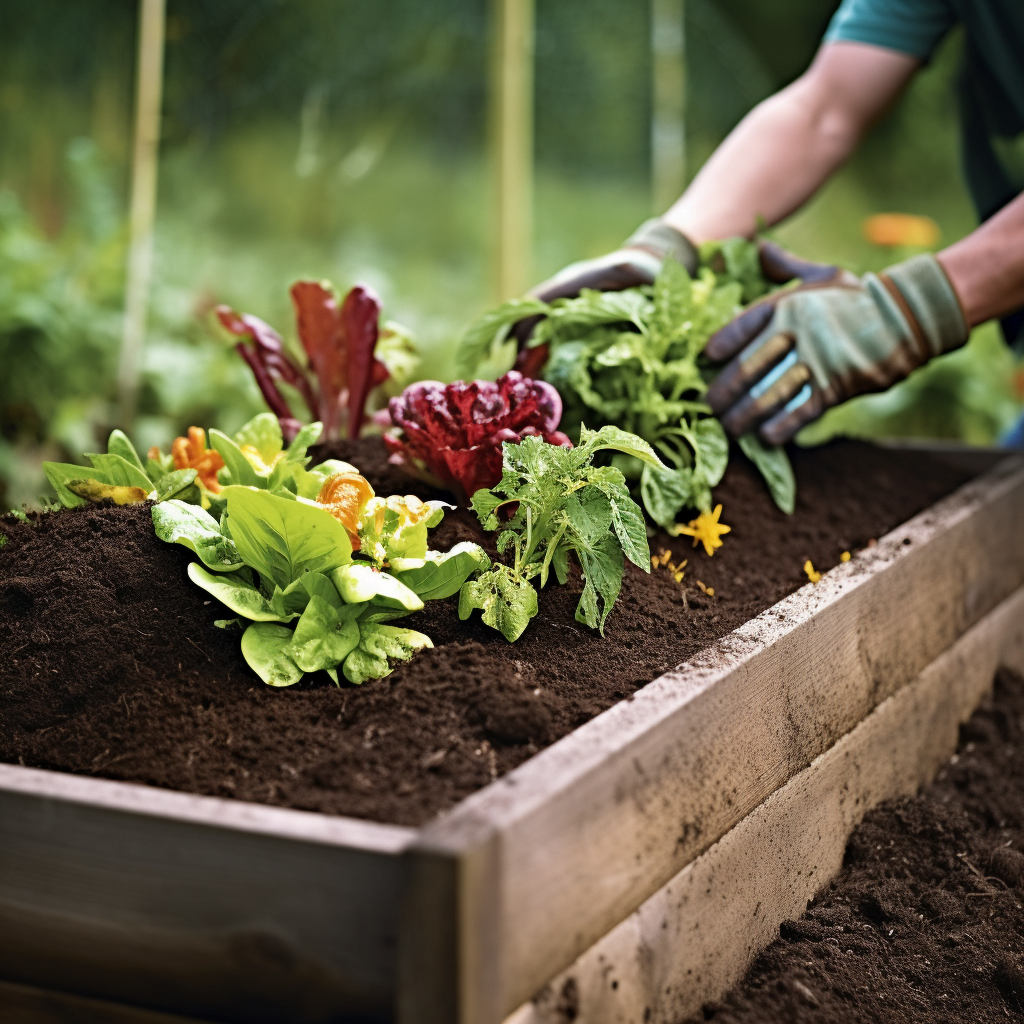In this article, we will discuss some helpful tips for adding compost to raised beds. We’ll cover topics such as the benefits of compost, how often you should add it to your raised bed, and the best methods for incorporating it into your garden. By the end, you’ll have a deeper understanding of the importance of compost in gardening and be equipped with practical advice for maximizing its benefits in your raised beds. So, if you’re looking to improve your gardening skills or enhance your off-grid living experience, keep reading to learn more about adding compost to your raised beds.
Tips for Adding Compost to Raised Beds
If you’re an avid gardener or someone interested in starting a garden, you’ve probably heard about the benefits of adding compost to your raised beds. Compost is a rich, organic material that can improve soil structure and fertility, enhance nutrient availability, increase water retention, promote beneficial soil microorganisms, and reduce soil erosion. By following a few simple tips, you can ensure successful and effective compost application in your raised beds, resulting in healthy plants and abundant harvests.
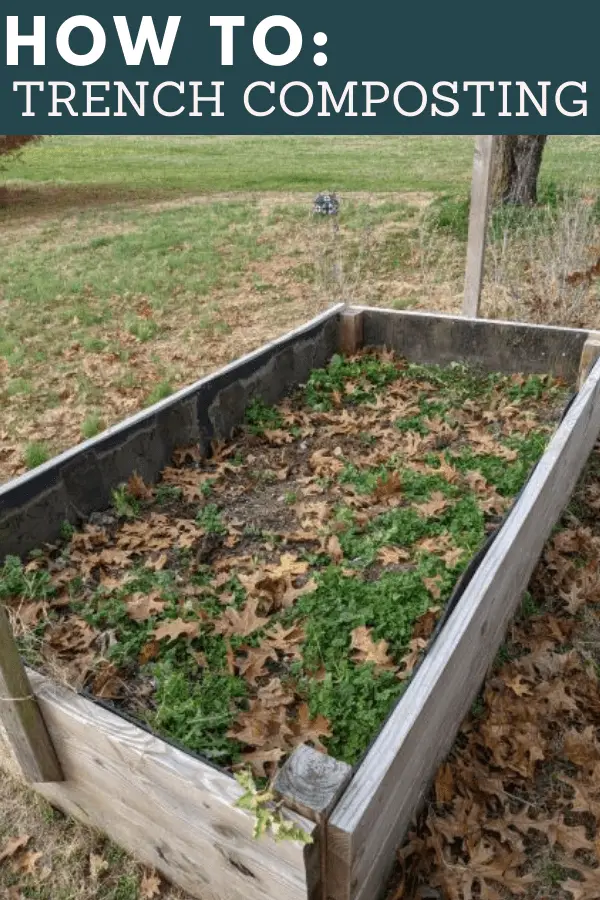
Improves Soil Structure and Fertility
One of the key benefits of adding compost to raised beds is its ability to improve soil structure. Compost helps to loosen heavy clay soils, making it easier for plant roots to penetrate and access nutrients. It also improves the water-holding capacity of sandy soils, reducing the need for frequent watering. Additionally, compost adds essential organic matter to the soil, providing a food source for beneficial soil organisms and improving overall fertility.
Enhances Nutrient Availability
Compost is a nutrient powerhouse, containing a wide range of essential elements such as nitrogen, phosphorus, and potassium. These nutrients are released slowly over time as organic matter in the compost decomposes, providing a steady supply to your plants. This slow-release action helps to prevent nutrient leaching and ensures that your plants have a consistent source of nutrition.
Increases Water Retention
Water is a precious resource, especially in dry climates or during periods of drought. By adding compost to your raised beds, you can increase the water-holding capacity of your soil. Compost acts like a sponge, absorbing and retaining moisture, which can help to reduce the frequency of watering. This not only saves water but also promotes healthier root growth and reduces the risk of underwatering or overwatering your plants.
Promotes Beneficial Soil Microorganisms
Healthy soil is teeming with beneficial microorganisms that play a vital role in breaking down organic matter, releasing nutrients, and suppressing harmful pathogens. Adding compost to your raised beds provides a rich food source for these microorganisms, encouraging their growth and activity. This, in turn, creates a thriving, biologically active soil environment that supports healthy plant growth and improves overall soil health.
Reduces Soil Erosion
Soil erosion is a common problem in gardens and can lead to nutrient loss and decreased plant productivity. By adding compost to your raised beds, you can help to prevent soil erosion. The organic matter in compost helps to bind soil particles together, creating a stable soil structure that is less prone to erosion. Additionally, the increased water-holding capacity of compost-amended soil helps to reduce runoff, further protecting against erosion.
Preparing Raised Beds for Compost
Before adding compost to your raised beds, it’s important to properly prepare the beds to ensure optimal results.
Clearing and Leveling the Bed
Start by clearing the raised bed of any existing plants, weeds, rocks, or other debris. Level the bed to create a smooth and even surface for compost application.
Amending with Organic Matter
To further enrich the soil, consider adding additional organic matter, such as well-rotted manure, leaf mold, or well-decomposed compost. This will provide an extra boost of nutrients and organic material to support your plants’ growth.
Creating a Compost Layer
Once the bed is cleared and amended, it’s time to add a layer of compost. Spread a 2-3 inch layer of compost evenly over the surface of the bed. This will provide a nutrient-rich layer for your plants’ roots to explore and benefit from.
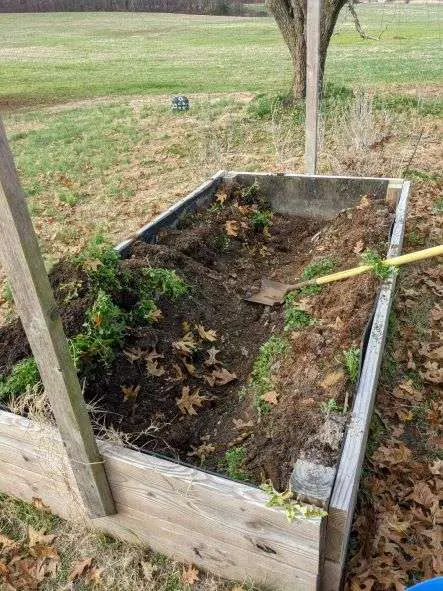
Choosing the Right Compost for Raised Beds
Not all compost is created equal, and choosing the right compost for your raised beds is crucial for success.
Understanding Compost Types
Compost can be made from a variety of organic materials, including kitchen scraps, yard waste, and animal manure. Each type of compost has its own nutrient profile and may suit different gardening needs. For example, manure-based compost tends to be higher in nitrogen, making it ideal for plants that require a nutrient boost, while leaf-based compost is rich in organic matter and provides excellent soil structure.
Evaluating Compost Quality
When selecting compost, it’s important to assess its quality. Look for compost that is dark, crumbly, and free from large debris or foul odors. High-quality compost should have a pleasant, earthy smell and a fine texture. Avoid compost that looks unfinished or contains visible chunks of unprocessed material.
Testing for Contaminants
Although compost is generally safe to use, it’s a good idea to test it for any potential contaminants, especially if you’re obtaining it from an external source. Heavy metals, pesticides, and herbicides can sometimes be present in compost, so conducting a simple soil test can provide peace of mind and ensure that your compost is safe for use.
Determining the Amount of Compost to Add
The amount of compost to add to your raised beds will depend on the size and depth of your beds, as well as the specific needs of your plants.
Considering Bed Size and Depth
Measure the length, width, and height of your raised beds to determine the total volume. Multiply these measurements to calculate the cubic footage of your beds. This will serve as a basis for determining the amount of compost needed.
Calculating Compost Quantity
A general guideline is to apply compost at a rate of 1-2 inches per year. For example, if you have a raised bed measuring 4 feet by 8 feet with a depth of 12 inches, the total volume would be 32 cubic feet. Applying compost at a rate of 1 inch per year would require 2.67 cubic feet (32 cubic feet divided by 12 inches). Adjust the quantity based on your specific needs and the nutrient requirements of your plants.
Avoiding Overcomposting
While compost is beneficial for plant growth, it’s important not to overdo it. Applying too much compost can lead to nutrient imbalances and excess organic matter, which can hinder plant growth. Follow the recommended application rates and regularly monitor your soil’s nutrient levels to avoid overcomposting.
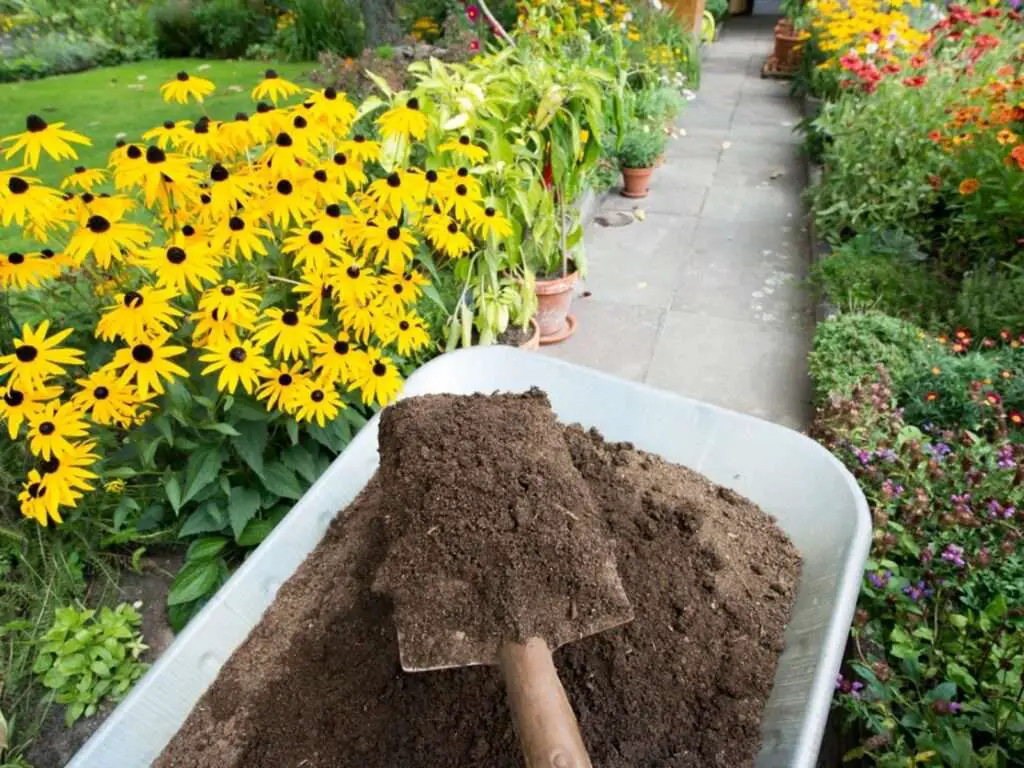
Applying Compost to Raised Beds
Once you’ve determined the appropriate amount of compost, it’s time to apply it to your raised beds.
Spreading Evenly on the Bed Surface
Using a garden rake or shovel, spread the compost evenly over the surface of the bed. Make sure to cover the entire area, reaching all corners and edges of the bed.
Incorporating into the Topsoil
Once the compost is spread, gently incorporate it into the topsoil. Use a garden fork or tiller to mix the compost and soil together, creating a homogeneous mixture. This will help to ensure that the compost is properly integrated into the existing soil.
Avoiding Root Damage
When incorporating the compost, be mindful of any existing plant roots in the raised bed. Take care not to damage or disturb the roots while mixing the compost into the soil. Gentle, careful movements will help preserve the health and vitality of your plants.
Timing and Frequency of Compost Application
Knowing when and how often to apply compost to your raised beds can greatly impact your garden’s success.
Adding Compost at Planting
A common practice is to add compost to your raised beds when initially planting your crops or transplants. Dig a hole or trench and place a small amount of compost in the bottom. This will give your plants a nutrient boost right from the start and support healthy root development.
Top-Dressing Throughout the Growing Season
As your plants grow, they will continue to benefit from additional compost. Top-dressing your beds with a thin layer of compost, typically around ¼ to ½ inch, throughout the growing season will provide a steady supply of nutrients. Gently rake the compost into the topsoil, taking care not to disturb the plant’s roots.
Yearly Maintenance Applications
To maintain soil fertility and overall soil health, it’s a good idea to add compost to your raised beds on a yearly basis. Apply a layer of compost in the fall or early spring, when the beds are not actively growing crops. This will replenish the nutrients used during the growing season and prepare the beds for the next planting cycle.
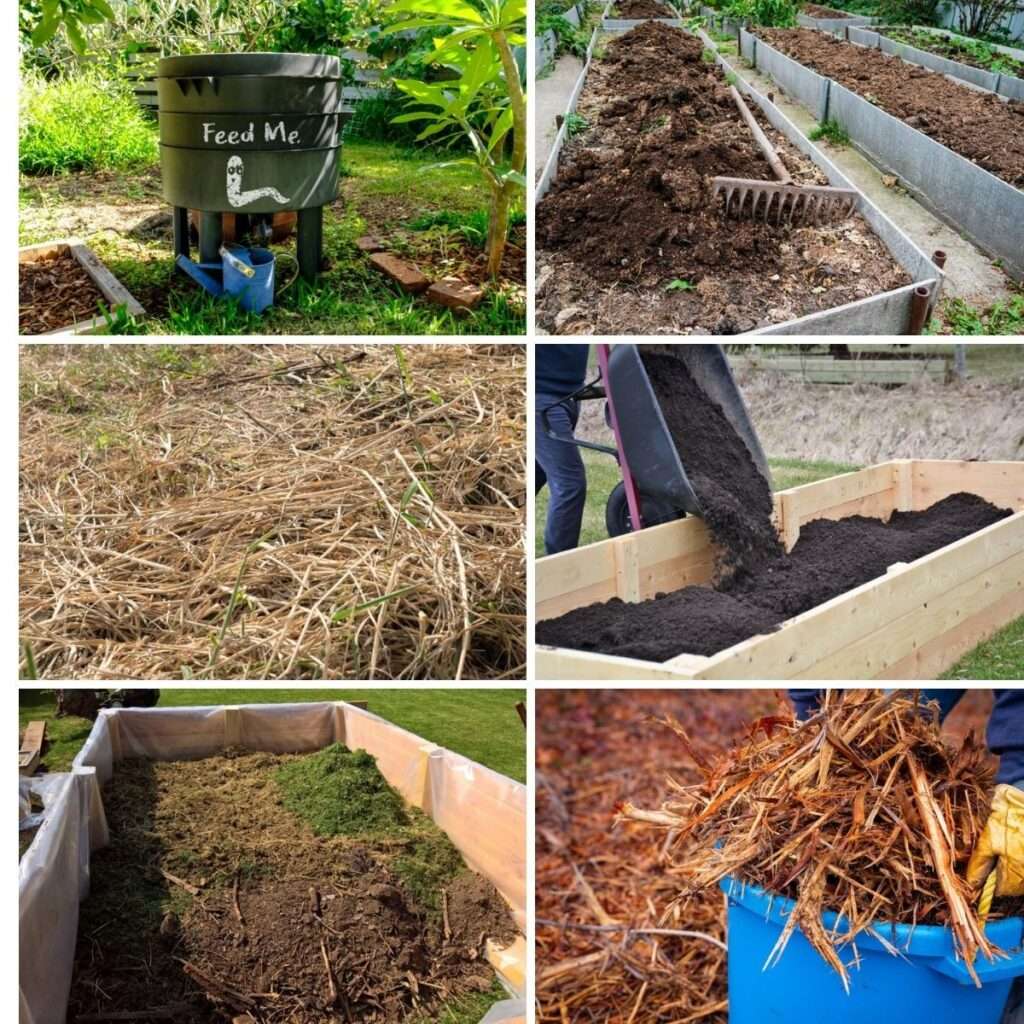
Best Practices for Compost Application
To maximize the benefits of compost in your raised beds, follow these best practices.
Mixing Compost with Existing Soil
When adding compost to your raised beds, it’s important to mix it thoroughly with the existing soil. This ensures that the nutrients are evenly distributed and that the compost can have maximum impact on the soil structure and fertility.
Avoiding High Compost Concentrations
While compost is beneficial, too much of a good thing can sometimes be detrimental. Avoid using excessively high concentrations of compost, as this can lead to nutrient imbalances and poor plant growth. The general recommendation is to aim for a compost-to-soil ratio of around 20-30%.
Covering Exposed Compost
To prevent the compost from drying out or being washed away by heavy rain, consider covering the surface with a layer of mulch. This will help to retain moisture, regulate soil temperature, and suppress weed growth. Organic mulches, such as straw or wood chips, are excellent choices for this purpose.
Compost Tea and Other Liquid Applications
In addition to applying compost directly to your raised beds, you can also harness the benefits of compost through liquid applications such as compost tea.
Understanding Compost Tea Benefits
Compost tea is a liquid fertilizer made by steeping compost in water. It provides a concentrated source of beneficial microorganisms and nutrients which can be absorbed by plant roots or foliar sprayed onto leaves. Compost tea can help to boost plant growth, improve disease resistance, and enhance overall plant vigor.
Application Methods and Dilution Rates
To apply compost tea, fill a bucket or container with water and add a measured amount of compost. Allow the compost to steep for a period of time, typically 24-48 hours, before straining off the liquid. Dilute the compost tea with water according to the recommended ratios before applying it to your raised beds.
Other Liquid Fertilizer Alternatives
In addition to compost tea, there are other liquid fertilizer options available, such as fish emulsion, seaweed extract, or diluted worm castings. These liquid fertilizers can provide a quick nutrient boost to your plants and complement the benefits of compost.
Monitoring and Adjusting Nutrient Levels
Regularly monitoring your soil’s nutrient levels is an important part of maintaining a healthy garden. By understanding your soil’s nutrient composition, you can identify any deficiencies or imbalances and take appropriate action.
Testing Soil Nutrient Levels
Soil testing is a valuable tool for assessing the nutrient content of your soil. A soil test will provide you with valuable information about the pH level, as well as the levels of essential nutrients such as nitrogen, phosphorus, and potassium. Testing can be done through commercial soil testing laboratories or using at-home test kits.
Identifying Nutrient Deficiencies
By observing your plants’ growth and appearance, you can often identify nutrient deficiencies. For example, yellowing leaves may indicate a nitrogen deficiency, while stunted growth or poor fruit development can be a sign of phosphorus or potassium deficiency. If you notice any signs of nutrient deficiencies, you can adjust your compost application rates or supplement with specific organic amendments to address the issue.
Supplementing with Additional Amendments
In some cases, additional amendments may be needed to address specific nutrient deficiencies or imbalances in your soil. Organic fertilizers such as bone meal, blood meal, or kelp meal can provide targeted nutrient supplementation. Additionally, mineral amendments such as lime or sulfur can be used to adjust the pH of your soil if it is too acidic or alkaline.
Potential Challenges and Solutions
While adding compost to your raised beds offers numerous benefits, there can be potential challenges that arise. Here are some common challenges and possible solutions:
Weed Growth from Uncomposted Seeds
Some compost may contain viable weed seeds that can germinate and cause weed problems in your raised beds. To prevent this, ensure that your compost reaches high enough temperatures during the composting process to kill weed seeds. Additionally, regularly monitor your raised beds for any emerging weeds and promptly remove them to prevent competition with your desired plants.
Compost Odor and Attracting Pests
Compost that is not properly managed or has an imbalanced carbon-to-nitrogen ratio can create unpleasant odors or attract pests. Proper compost management, including regular turning and monitoring of moisture levels, will help to minimize odor issues. Adding a layer of soil or mulch over the compost can also help to deter pests.
Addressing High Salt or Heavy Metal Content
In some cases, compost may contain elevated levels of salt or heavy metals, which can be detrimental to plant growth. It’s important to test your compost for these contaminants and choose a compost source that meets appropriate quality standards. If high salt or heavy metal content is detected, it may be necessary to find alternative sources of compost or to limit the use of compost in certain areas of your garden.
Tips for Maximizing Compost Benefits
To make the most of compost in your raised beds, consider the following tips:
Covering Beds with Mulch
After applying compost to your raised beds, cover the surface with a layer of mulch. This will help to retain moisture, suppress weed growth, and protect the compost from being exposed to the elements.
Rotating Crops for Balanced Nutrient Uptake
To ensure balanced nutrient uptake and minimize the risk of nutrient depletion, practice crop rotation in your raised beds. This involves changing the location of your plants each growing season to avoid planting the same crops in the same spot repeatedly.
Mixing Different Compost Types
Consider using a variety of compost types in your raised beds to take advantage of their unique nutrient profiles and benefits. By mixing different compost sources, you can create a diverse and well-rounded soil environment.
Common Mistakes to Avoid
Avoiding common pitfalls can help ensure successful compost application in your raised beds.
Using Unfinished or Unprocessed Compost
Using compost that is not fully decomposed or still contains large pieces of organic material can hinder plant growth. Unfinished compost can rob plants of nutrients as it continues to decompose. Ensure that your compost is fully matured and has a crumbly texture before applying it to your raised beds.
Adding Compost with Weed Seeds
As mentioned earlier, compost that contains viable weed seeds can introduce weed problems to your raised beds. Ensure that your compost has undergone proper composting conditions to kill weed seeds. If in doubt, opt for compost sources that have been certified as weed seed-free.
Neglecting to Monitor Soil pH
Soil pH plays a vital role in nutrient availability to your plants. Inadequate pH levels can hinder nutrient uptake and cause nutrient deficiencies or toxicities. Regularly test your soil pH and make adjustments if necessary by adding soil amendments such as lime or sulfur.
Conclusion
By following these tips, you can ensure successful and effective compost application in your raised beds, resulting in healthy plants and abundant harvests. Adding compost to your raised beds improves soil structure and fertility, enhances nutrient availability, increases water retention, promotes beneficial soil microorganisms, and reduces soil erosion. Remember to prepare your raised beds properly, choose the right compost, determine the appropriate amount to add, and apply it correctly. Monitoring nutrient levels, addressing challenges, and following best practices will help you maximize the benefits of compost and create a thriving garden. With the right approach, you can enjoy the rewards of nutrient-rich soil and bountiful harvests throughout the gardening season. Happy composting!

